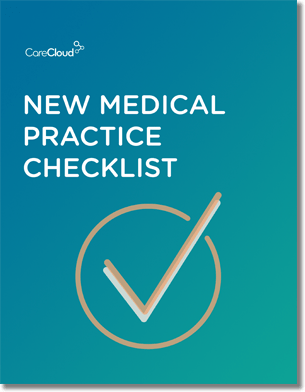Designers are the telepathists of the business world. Some possess an oft-overlooked understanding of how humans process information, and use it to drive functionality, innovation and value for businesses.
As a testament to how highly we regard intelligent design at CareCloud, we sat down with Dr. Kathleen A. Harder, director of the Center for Design in Health at the University of Minnesota, and picked her brain about the crucial role of design in EHR development.
What role does design play in EHR development? How does it contribute to usability?
Properly utilized it plays an enormous role. In my design work, I look at problems through the lens of how we as humans process information—via the strengths and weaknesses of human perception and cognition. If the EHR design problem is approached from a human information processing perspective—factoring in, for example, how we humans attend to information and how best to present it in a readily understandable way—then the EHR will function more effectively and efficiently for those who provide patient care, better patient care will result, and human error will be diminished.
In other words, design these systems in such a way that physicians, nurses, and others on the care team won’t need to have their heads in the computer as long. Less time with the computer results in more bedside time to provide direct patient care. We should be working to remove the hoops and hurdles that EHR companies have put in front of care providers.
Also to create a better Electronic Health Record system, designers need to consult with physicians and nurses and other players involved in delivering care to make sure they’re designing the EHR well. Those who provide frontline patient care have keen insights into the care they provide and how technology can enhance their process rather than hinder it.
Do you feel design in EHR development is often overlooked or underappreciated? Why?
Yes, I do. I also think it’s misunderstood. When companies say they’ve done usability testing, we should question what that really means for them. If effective usability testing had been done, we wouldn’t have many of the EHR issues we see today.
And what goes into good usability? Good EHR builds include the user and their needs from the very beginning, from concept development through all stages of the design cycle to the end. It’s an iterative design process in which you involve the user from the very beginning to query them about what they really need to provide great patient care. However, users can’t provide all the direction. You need a designer in the mix to make sure someone is thinking about how the needs are best represented and presented in the EHR.
Developers and designers are both communicators in different veins. How can both kinds of roles collaborate to help spur innovation in the healthcare technology field?
We need to speak with each other in constructive ways. Sometimes, an EHR developer tells me, when I propose an idea to them, that it can’t be done. But I know it can be done, because I know enough about programming to know the programming involved in tackling the problem is not rocket science. After talking together we make inroads into creatively addressing the issue and solving it.
Platform is also important. If the EHR is built on an archaic platform, it presents some design constraints, or idea constraints. But often times, that isn’t even the root of it. There are often cost issues involved, coupled with an underestimation of how huge the problem is for physicians, nurses, and others on the patient care team to deal with the poorly designed EHR systems out there.
To build a case [as a designer], bring it to the vendor and tell them the issues—this helps to open the developers’ eyes. Sometimes they really don’t know what they don’t know. I don’t want to paint the picture that it’s a conflict-ridden situation. Having meaningful and respectful conversations with them about how to improve their product is essential.
How does intelligent design in EHR development and healthcare technology in general help reduce financial waste and accidents?
Smart design saves healthcare organizations significant money over time because people are able to become more productive while committing fewer errors. I have been in operating rooms (OR) where one nurse is focused on the computer during the entire case, documenting and making sure everything is caught up in the computer, while another OR circulating nurse attends to patient and team needs throughout the case. Circulating nurses are expensive. If EHRs were designed in such a way that users didn’t have to go through so many different hoops and hurdles to enter and track case-related and patient-related information, then their time would be freed up to provide direct patient care. This is an example of how better EHR design could result in savings to health care organizations.
How do EHRs reduce or increase rate of error?
I know that designing EHRs in a smart way leads to error reduction. Just as an example from my own experience, some years ago a colleague and I were invited to design a more effective ordering process—with paper—for blood transfusion orders. The hospital had had a high number of adverse events associated with patients’ need for irradiated blood. After the hospital implemented a better-designed blood ordering and administration process, errors were reduced to zero for well over 2 years. When that particular hospital introduced what I knew were poorly designed electronic blood orders, I predicted they’d have errors. Indeed, they had errors in the first week.
When you talk about information design and cognitive performance, people fail to appreciate how changing information, in what appear to be subtle ways, has a significant impact on how well they perform.

Do you know what you need when setting up a new medical practice?



